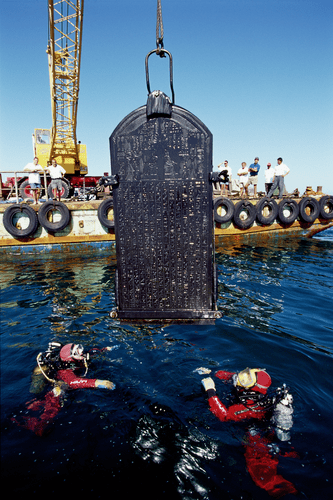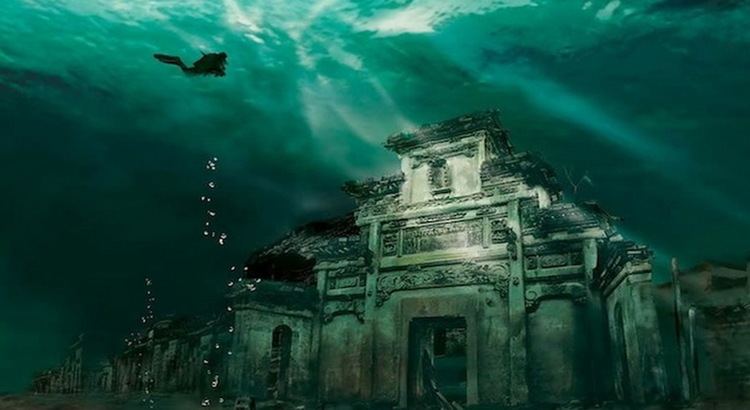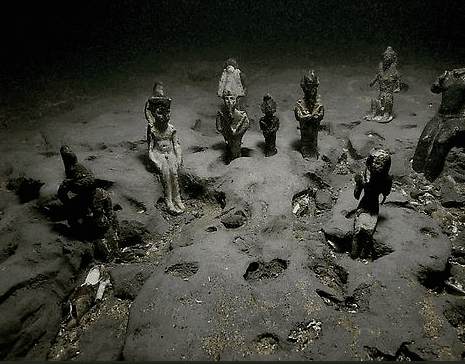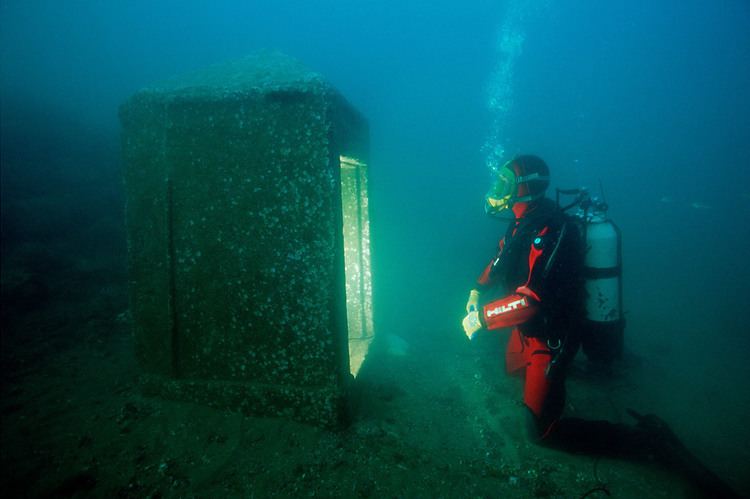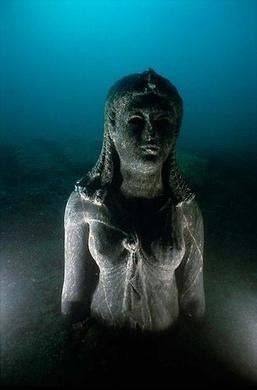Location near Alexandria, Egypt | ||
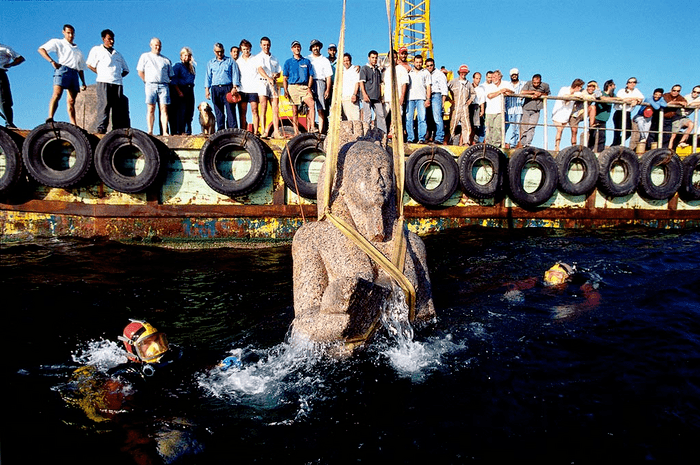 | ||
Weather 11°C, Wind SW at 23 km/h, 77% Humidity | ||
The lost city of heracleion
Heracleion (Greek: Ἡράκλειον), also known as Thonis (Θῶνις), was an ancient Egyptian city located near the Canopic Mouth of the Nile, about 32km northeast of Alexandria. Its ruins are located in Abu Qir Bay, currently 2.5 km off the coast, under 10 m (30 ft) of water. Its legendary beginnings go back to as early as the 12th century BC, and it is mentioned by ancient Greek historians. Its importance grew particularly during the waning days of the Pharaohs. In the Late Period, it was Egypt's main port for international trade and collection of taxes.
Contents
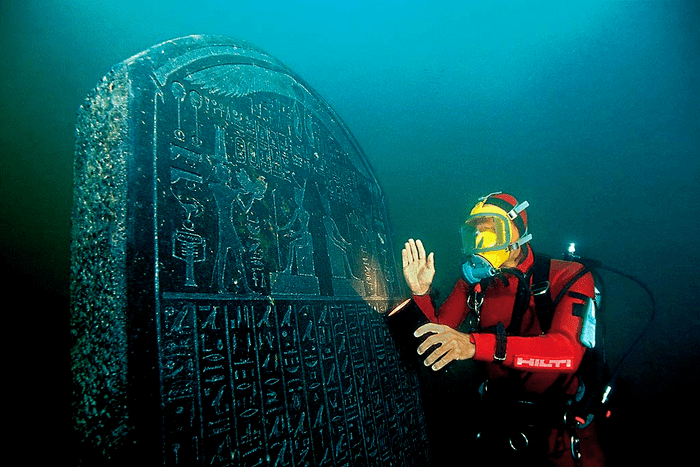
Heracleion was originally built on some adjoining islands in the Nile Delta, and was intersected by canals. It had a number of harbors and anchorages and was the sister city of Naucratis until it was superseded by Alexandria.
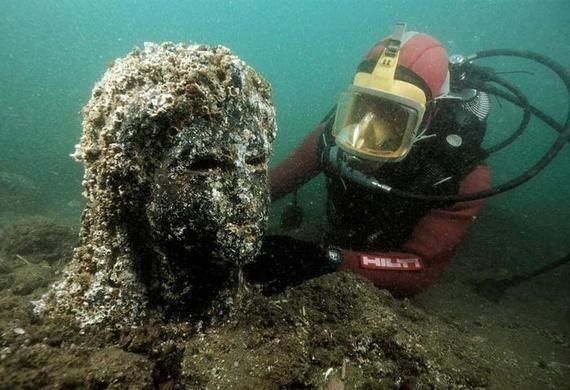
Legendary beginnings
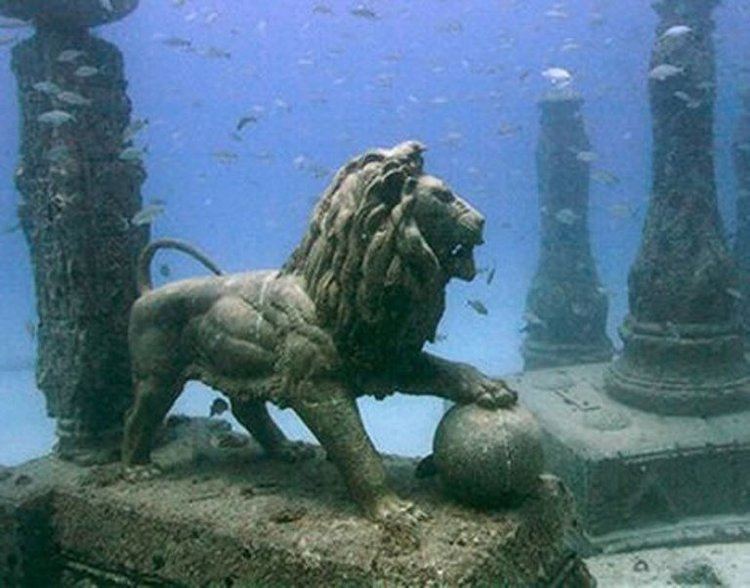
It was believed that Paris and Helen of Troy were stranded there on their flight from the jealous Menelaus, before the Trojan war began or that Menelaus and Helen had stayed there, accommodated by the noble Egyptian Thon and Polydamna. Also, it was believed that Heracles himself had visited the city, resulting in the Greeks calling it by the Greek name Heracleion rather than its original Egyptian name Thonis.
Archaeology
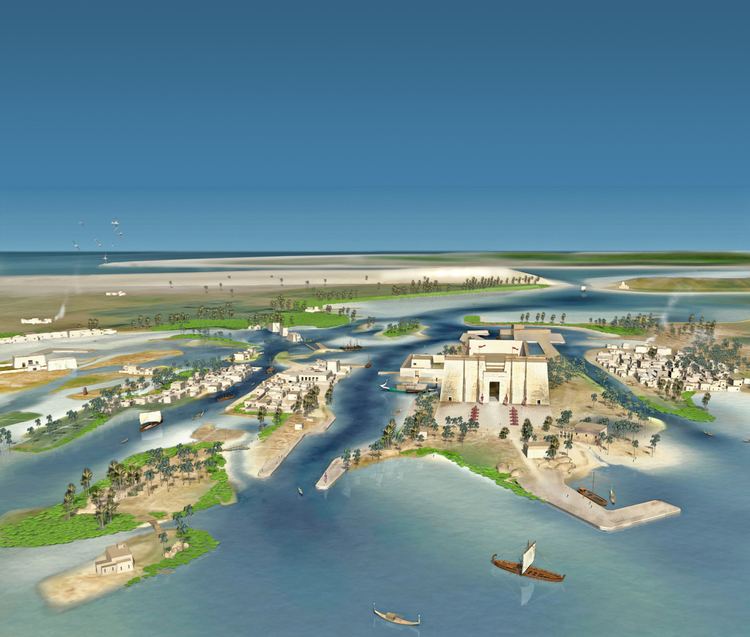
The city had a large temple of Khonsou, son of Amun, who was known to the Greeks as Herakles. Later, the worship of Amun became more prominent.
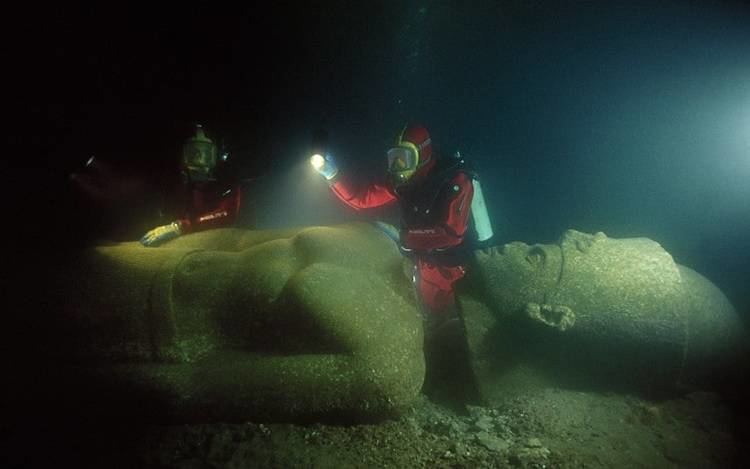
Heracleion flourished especially from the 6th to the 4th century BC, as revealed by numerous archaeological finds. Pharaoh Nectanebo I made many additions to the temple in the 4th century B.C. The city sank in the 3rd or 2nd century AD, probably due to liquefaction of the silts on which it was built following earth tremors.
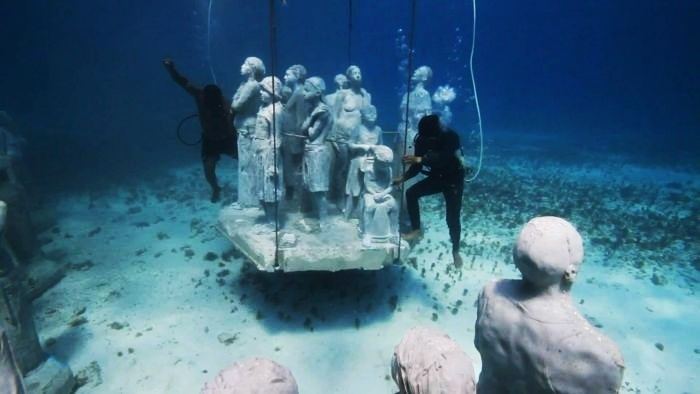
The ruins submerged in the sea were located by the French underwater archaeologist Franck Goddio in 2000. Until then, the scholars were not sure if Heracleion and Thonis were in fact one and the same city.
